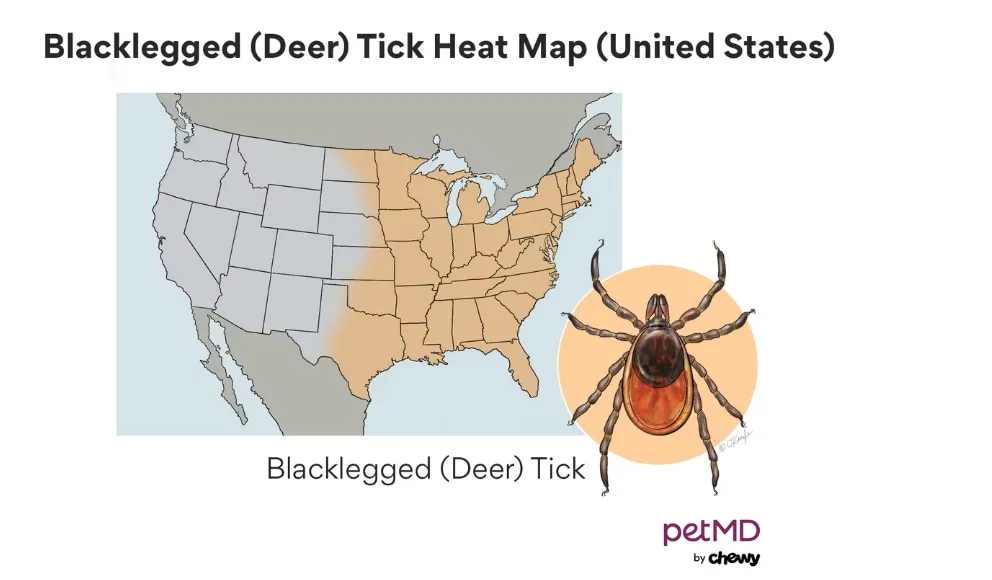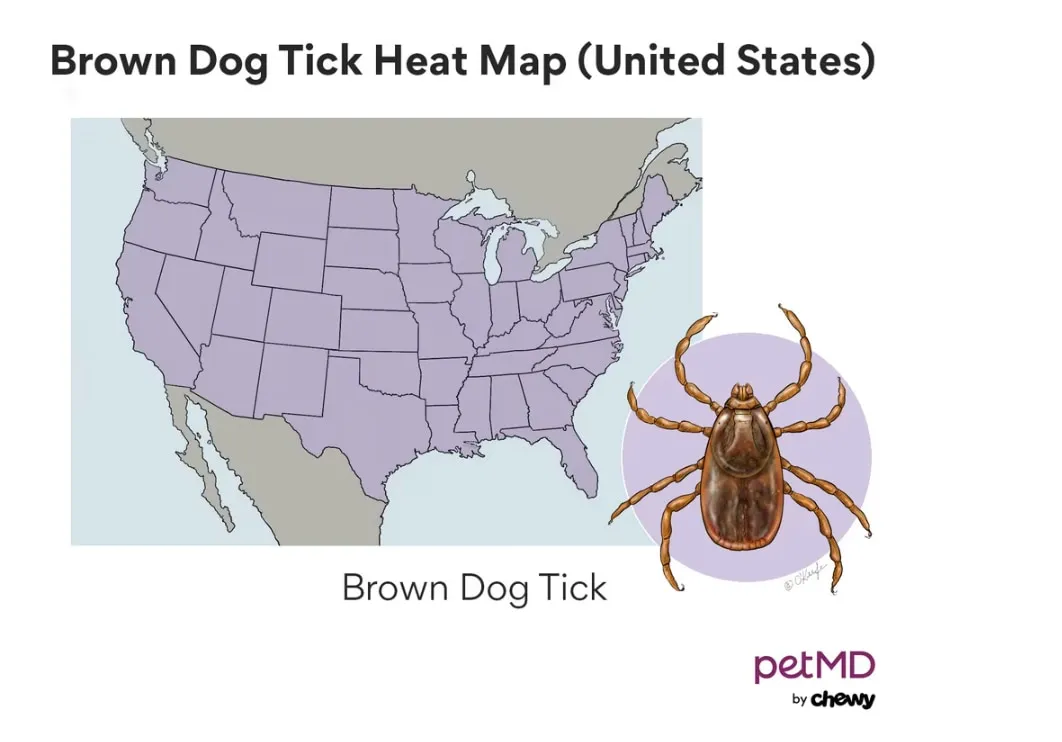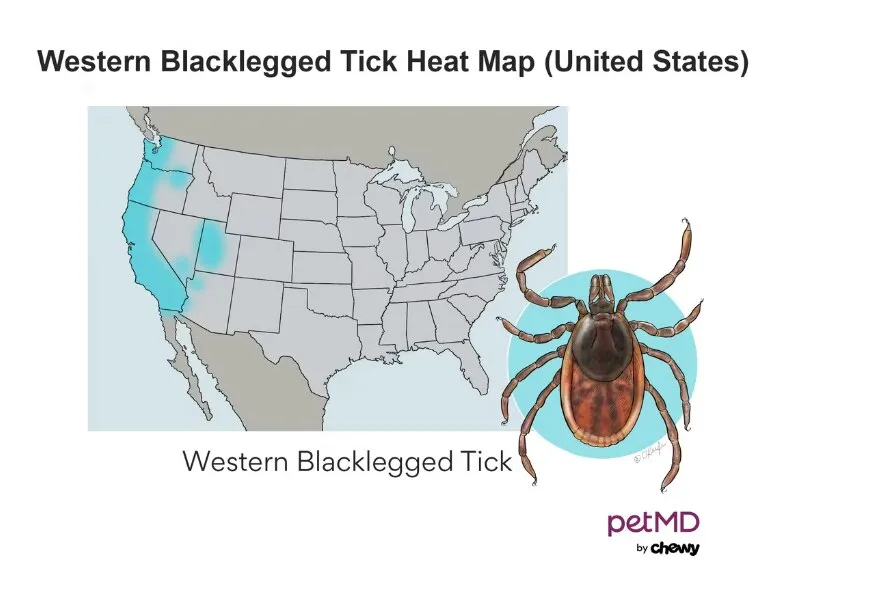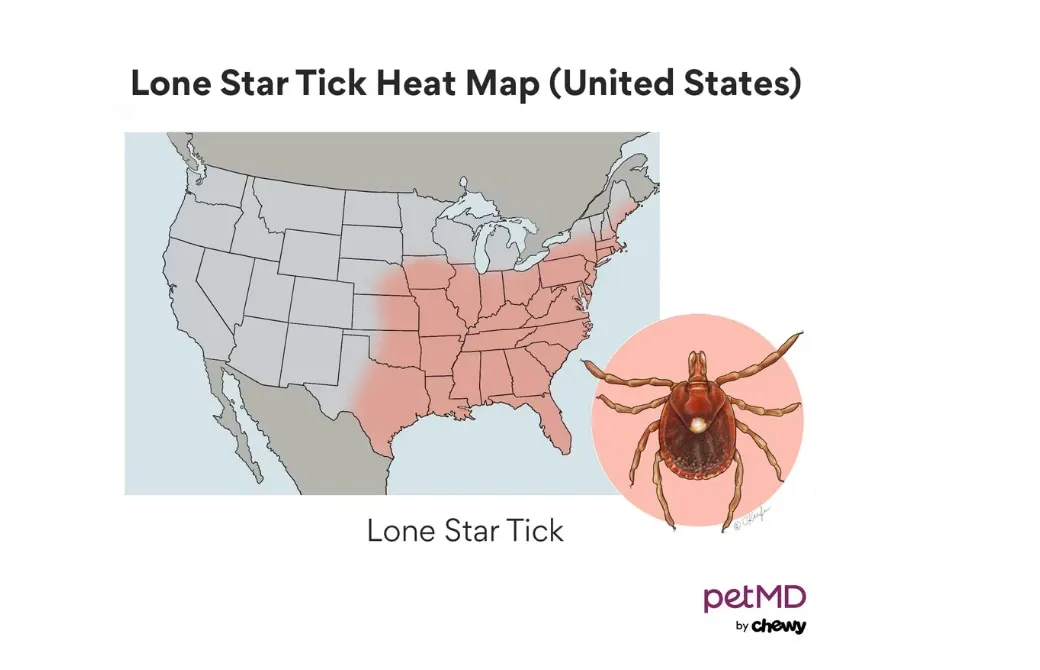As responsible pet parents, ensuring the health and well-being of our furry companions is a top priority. Preventative care is a cornerstone of this commitment, and among the most critical aspects is safeguarding our dogs against fleas and ticks. These tiny parasites pose significant health risks, ranging from skin irritation to severe diseases, making effective and consistent flea and tick protection for dogs an essential part of their routine care. Understanding the threats these pests present and knowing how to choose the optimal preventative measures can make all the difference in keeping your dog healthy and happy.
This comprehensive guide, brought to you by Dog Care Story, will delve into everything you need to know about protecting your dog from fleas and ticks. We’ll explore why prevention is vital, when to administer it, factors to consider when selecting a product, and provide an overview of popular and effective solutions available on the market. Our aim is to equip you with the knowledge to make informed decisions, ensuring your beloved canine companion receives the best possible protection.
Why is Flea and Tick Prevention Crucial for Your Dog?
Fleas and ticks are external parasites, or ectoparasites, that live on the outside of their host. To survive and reproduce, these pests must bite their host and feed on their blood. While the thought of parasites on your dog is unpleasant, the consequences extend far beyond mere discomfort.
Flea bites can lead to a range of health issues for your dog. The saliva injected during a bite can cause severe allergic reactions, known as flea allergy dermatitis, which results in intense home remedies for severe itching in dogs, skin inflammation, and infections. In young puppies or severely infested dogs, significant blood loss can even lead to anemia, a potentially life-threatening condition.
Tick bites are equally, if not more, dangerous. Beyond causing localized infections and abscesses at the bite site, ticks are notorious vectors for transmitting a variety of serious diseases to dogs. These can include:
- Lyme Disease: Caused by the bacterium Borrelia burgdorferi, leading to lameness, fever, swollen joints, and kidney damage.
- Ehrlichiosis: Caused by bacteria, affecting blood cells and bone marrow, potentially causing lethargy, fever, bleeding disorders, and lameness.
- Anaplasmosis: Also a bacterial disease, manifesting with symptoms similar to Lyme, such as lameness, fever, and joint pain.
- Rocky Mountain Spotted Fever: A severe bacterial disease causing fever, skin rashes, joint pain, neurological issues, and organ damage.
- Babesiosis: Caused by blood parasites, leading to anemia, fever, weakness, and jaundice.
- Canine Paralysis Tick Toxicity: Caused by toxins in the saliva of certain tick species, leading to progressive paralysis and respiratory failure, often fatal if untreated.
Many of these tick-borne diseases can have long-term health implications and require extensive treatment. Some, like Lyme disease, can even be transmitted to humans, highlighting the importance of comprehensive parasite control for the entire household’s safety. By consistently using the Best Flea Tick Protection For Dogs, you are not only protecting your pet but also your family from these pervasive threats.
When Should You Start Flea and Tick Prevention?
Fleas and ticks are incredibly resilient and can thrive in diverse environments across many geographical areas. While many pet owners associate these parasites with warmer months, the reality is that fleas and ticks can be a year-round threat, even in colder climates where they may seek refuge indoors or in sheltered outdoor areas.
Due to their hardiness and the wide array of diseases they carry, veterinarians strongly recommend initiating flea and tick prevention for dogs as early as 8 weeks of age (depending on the product’s label) and continuing it consistently throughout your dog’s entire life. This year-round approach ensures continuous protection, preventing infestations before they even begin and safeguarding your dog from potential health complications. Establishing a regular prevention schedule is key to breaking the parasite life cycle and maintaining a pest-free environment for your pet and your home.
How to Choose the Best Flea and Tick Protection for Your Dog
Selecting the most suitable flea and tick combination medicine for your dog involves careful consideration of various factors. There is a wide array of products designed to combat parasites, including pesticides, repellents, and growth inhibitors, each targeting pests at different life stages to prevent infestations. While some products may only be effective against fleas, combination preventatives offer broader protection. Many of the best flea tick protection for dogs options today contain multiple active ingredients to tackle different types of pests, often providing additional defense against heartworms, skin and ear mites, and intestinal parasites. For instance, products like Credelio Quattro offer comprehensive protection against fleas, ticks, heartworms, roundworms, hookworms, and tapeworms.
Before making any decision, it is paramount to consult with your veterinarian. They can provide personalized recommendations based on your dog’s specific needs, health status, and local parasite risks. When discussing options with your vet, be prepared to review product labels and ask questions to ensure:
- The product is formulated for dogs, not cats, as some cat products are toxic to dogs and vice versa.
- The dosage corresponds to your dog’s correct weight range.
- The product effectively targets the specific parasites prevalent in your region and relevant to your dog’s lifestyle.
- Whether the medication should be administered with food.
- The recommended frequency of administration (e.g., monthly, quarterly, or every 8 months).
- The time it takes for the product to become effective.
- How soon you can bathe your pet after application, especially for topical treatments.
- Any potential safety concerns or side effects.
- What steps to take in the event of an adverse reaction.
Beyond these crucial veterinary consultations, several other factors can influence your choice of the best flea tick protection for dogs:
Application Method
Flea and tick preventatives typically come in two primary forms:
- Oral: These are chewable tablets that your dog ingests, often flavored to be palatable.
- Topical: These are liquid solutions applied directly to your dog’s skin, usually between the shoulder blades or down the back.
Topical preventatives can be an excellent choice for dogs that are picky eaters or have sensitive stomachs, as they bypass the digestive system. However, caution is necessary in households with small children or other pets, as they might touch or lick the application site before it dries, potentially exposing them to the chemicals. Topical treatments may also be less effective for dogs who enjoy swimming frequently or require regular baths, as water exposure can diminish their efficacy.
Oral treatments offer convenience, often given like a treat, and are generally unaffected by bathing or swimming once absorbed. If you opt for oral medications, it’s advisable to monitor your dog to ensure they consume the entire tablet and do not vomit it up before it can be absorbed into their system.
Geographical Location and Local Parasite Populations
The prevalence and types of parasites, including fleas and ticks, can vary significantly depending on your geographic location. Different regions host different local parasite populations, each carrying unique risks. Resources like the Companion Animal Parasite Council (CAPCVet) provide valuable data on parasite distribution across the United States. Utilizing such resources can help you identify the specific threats in your area, enabling you to select a flea and tick product that provides the most comprehensive protection against the local parasite burden.
 Tick species prevalent in different geographical regions of the United States
Tick species prevalent in different geographical regions of the United States Map showing the distribution of common ticks that affect dogs
Map showing the distribution of common ticks that affect dogs Graphical representation of parasite presence across various U.S. states
Graphical representation of parasite presence across various U.S. states Illustrative map detailing seasonal parasite risk levels for dogs
Illustrative map detailing seasonal parasite risk levels for dogs
Your Dog’s Access to the Outdoors
Consider the environments where your dog spends time. Areas such as dog parks, hiking trails, wooded areas, public parks, dense bushes, and even your own backyard can all be havens for fleas and ticks. If your dog frequently explores wooded areas or spaces frequented by other animals and dogs, their risk of parasite exposure is significantly higher.
It’s a common misconception that indoor-only dogs are safe from fleas and ticks. Even if your dog spends most of their time inside, fleas can easily enter your home through window screens, on other pets that go outdoors, or even hitch a ride on your clothing and shoes. For this reason, veterinarians universally recommend year-round flea and tick prevention for all dogs, regardless of how much time they spend outdoors.
The MDR-1 Gene and Sensitive Breeds
Certain dog breeds, including Collies, Australian Shepherds, and Shetland Sheepdogs, carry a specific gene mutation known as MDR-1. This mutation affects their ability to properly metabolize and break down certain medications, making them more susceptible to adverse reactions.
Many veterinarians recommend testing at-risk breeds for the MDR-1 gene to ensure medication safety. Fortunately, many manufacturers of modern parasite preventatives have rigorously tested their products for safety in dogs with the MDR-1 mutation, often finding no adverse effects. However, always confirm this information with your vet and the product label.
Your Dog’s Lifestyle
While no breed is inherently more at risk of acquiring fleas or ticks than another, a dog’s individual lifestyle and breed characteristics can influence their exposure level. For example, working, herding, and hunting dogs often spend a considerable amount of their day outdoors in fields or dense vegetation, increasing their risk. In contrast, dogs that are content to stay indoors and only venture out for short, controlled potty breaks may have lower, but not zero, exposure. Your veterinarian can help assess your dog’s lifestyle to recommend the best flea tick protection for dogs that aligns with their daily activities.
Life Stage and Breed Size
The age and size of your dog are crucial factors in selecting an appropriate flea and tick preventative. Puppies and very small dog breeds often have specific requirements for safe medication administration. Most flea and tick preventatives have a minimum age requirement, typically 8 weeks, and specific weight ranges. Always check the package insert for confirmation and consult your veterinarian to find a product that is safe and effective for your puppy’s age and weight. Some products, like Revolution Topical Solution for Kittens and Puppies, are specially formulated for very young animals and can be used as early as 6 weeks of age.
Existing Medical Conditions
Certain medical conditions can influence the choice of flea and tick prevention. For example, preventatives in the isoxazoline class should be used with extreme caution in dogs with a history of seizures or other neurologic diseases, as these medications may lower the seizure threshold in susceptible individuals. It is critical to have a thorough discussion with your veterinarian before administering any preventative if your dog has experienced a seizure or other neurological issues.
Furthermore, no preventative should be given without detailed veterinary consultation if:
- Your dog has previously had an allergic reaction to a similar medication.
- Your dog is currently sick, underweight, or otherwise debilitated.
- Your dog is pregnant, nursing, or being used for breeding purposes.
Your vet can help you choose the safest and most effective option, potentially recommending alternatives or specific monitoring protocols. If your dog experiences any signs of illness like vomiting, a specific medicine to stop dogs from throwing up should be sought from your vet, rather than assuming it’s related to prevention.
Over-the-Counter vs. Prescription Flea and Tick Medicine
When searching for the best flea tick protection for dogs, you will encounter both over-the-counter (OTC) and prescription options. Understanding the differences between these categories is important.
Over-the-Counter Flea and Tick Products
OTC flea and tick preventatives do not require a veterinarian’s prescription and are widely available for purchase online and in various retail pet stores. These products often include topical spot-ons, shampoos, dips, and some collars. While convenient and often more affordable, it’s crucial to exercise caution. Not all OTC products are created equal, and some may have a narrower spectrum of activity or contain ingredients that are less effective or potentially harmful if misused.
If you choose an OTC flea and tick preventative, always consult with your veterinarian first. They can confirm its safety and efficacy for your specific dog and advise on potential interactions with any other treatments or existing health conditions.
Prescription Flea and Tick Products
Prescription flea and tick preventatives require a valid prescription from your veterinarian, typically necessitating an annual examination to ensure your dog is healthy enough for the medication. These products usually come in oral chewable forms or topical applications. While they often cost slightly more than OTC options, most veterinarians strongly recommend prescription products. They are generally considered more effective, have undergone more rigorous testing, and offer a broader spectrum of protection against various parasites, including heartworms and intestinal worms, in addition to fleas and ticks. Your vet is the best resource to guide you toward the most appropriate and safest prescription option for your dog.
Popular Dog Flea and Tick Prevention Products
The market offers a diverse range of excellent flea and tick prevention products. Here’s an overview of some popular options, highlighting their key features and considerations:
Advantage
- Advantage II: A topical monthly product containing imidacloprid and pyriproxyfen. It’s fast-acting, killing all forms of fleas (eggs, larvae, adults) and chewing lice within hours. Note: This product does not offer tick prevention. Suitable for dogs and puppies over 7 weeks and weighing more than 3 pounds.
- Advantage Multi: Another topical monthly product, combining imidacloprid and moxidectin. It treats fleas, sarcoptic mange, intestinal parasites (hookworms, roundworms, whipworms), and prevents heartworm disease. Fast-acting for fleas, with other parasites taking up to 24 hours. Note: This product does not offer tick prevention. For dogs and puppies over 7 weeks and weighing more than 3 pounds.
Bravecto
Bravecto is available as a chewable tablet or topical solution, featuring fluralaner, an isoxazoline drug. It’s fast-acting, beginning to kill fleas within two hours and ticks within 12 hours. Bravecto also effectively treats demodectic, sarcoptic mange, and ear mites. Caution: As an isoxazoline, use with caution in dogs with a history of seizures, epilepsy, or neurologic disorders.
Comfortis
Comfortis is a chewable tablet with spinosad as its active ingredient. This product only treats fleas. It’s a fast-acting agent, killing fleas within 30 minutes of dosing. Suitable for dogs and puppies 14 weeks or older and weighing over 5 pounds. Typically administered monthly.
Credelio
Credelio is a monthly chewable tablet containing lotilaner, another isoxazoline drug. It treats both fleas and ticks, starting to kill fleas within four hours. Recommended for dogs and puppies over 8 weeks and weighing more than 4.4 pounds. Caution: Like other isoxazolines, use with caution in dogs with a history of seizures, epilepsy, or neurologic disorders.
Credelio Quattro
Building on Credelio, Credelio Quattro is a monthly chewable tablet for comprehensive protection. It includes lotilaner for fleas and ticks, moxidectin for heartworms, hookworms, and roundworms, praziquantel for two species of tapeworms, and pyrantel for hookworms and roundworms. This combination makes it one of the most comprehensive options for the best flea tick protection for dogs, available for dogs and puppies 8 weeks of age and older weighing at least 3.3 pounds.
Frontline
- Frontline Gold: A topical monthly product with fipronil, (s)-methoprene, and pyriproxyfen. Kills fleas, ticks, and chewing lice within hours. For dogs and puppies over 8 weeks and weighing more than 5 pounds.
- Frontline Plus: A topical monthly product containing fipronil and (s)-methoprene. Kills fleas, ticks, and chewing lice, but may take longer to act than Frontline Gold. For dogs and puppies over 8 weeks and weighing more than 5 pounds.
- Frontline Shield: A topical monthly product with fipronil, permethrin, and pyriproxyfen. Kills all fleas, ticks, chewing lice, and stable flies. Also repels mosquitoes, stable flies, and ticks. Begins killing fleas in five minutes and ticks within one hour. For dogs and puppies over 9 weeks and weighing more than 5 pounds. Important: Highly toxic to cats; extreme caution is advised in households with cats.
K9 Advantix II
K9 Advantix II is a topical monthly product containing imidacloprid, permethrin, and pyriproxyfen. It repels and kills fleas, ticks, mosquitoes, and chewing lice, and also repels biting flies. Fast-acting, beginning to kill parasites within hours. For dogs and puppies over 7 weeks old and weighing more than 4 pounds. Important: Highly toxic to cats; extreme caution is advised in households with cats.
Nexgard
Nexgard is a monthly chewable tablet with afoxolaner, an isoxazoline drug. It’s effective against fleas, deer ticks, American dog ticks, brown ticks, and Lone Star ticks. Also used off-label for sarcoptic and demodectic mange. Starts killing fleas within four hours and ticks within 48 hours. For dogs and puppies over 8 weeks old and weighing more than 4 pounds. Caution: Like other isoxazolines, use with caution in dogs with a history of seizures, epilepsy, or neurologic disorders.
Onguard Plus
Onguard Plus is a topical monthly product featuring fipronil and (s)-methoprene. It kills all fleas, ticks, sarcoptic mange, and chewing lice. For dogs and puppies over 8 weeks old and weighing more than 5 pounds.
Seresto
Seresto is a collar containing imidacloprid and flumethrin that provides extended protection. It kills and repels fleas and ticks for eight months. Fleas are killed within 24 hours and ticks within 48 hours of application. Frequent bathing or swimming (more than once per month) may reduce efficacy, potentially requiring replacement every five months. Suitable for dogs and puppies over 7 weeks of age.
Simparica Trio
Simparica Trio is a monthly chewable tablet combining sarolaner (an isoxazoline), moxidectin, and pyrantel. It treats fleas, ticks, roundworms, and hookworms, and prevents heartworm disease. It’s also used off-label to treat demodectic mange, sarcoptic mange, and ear mites. Begins killing fleas and ticks within 12 hours. For dogs and puppies over 8 weeks old and weighing more than 2.8 pounds. Caution: As an isoxazoline, use with caution in dogs with a history of seizures, epilepsy, or neurologic disorders. Should your dog develop an ear infection, knowing the best medicine for ear infection in dogs is crucial, but always consult your vet.
Trifexis
Trifexis is a chewable tablet containing spinosad and milbemycin oxime. It’s effective against fleas, hookworms, roundworms, and whipworms, and prevents heartworm disease. It’s fast-acting, killing fleas within 30 minutes. Note: This product does not provide protection from ticks. For dogs and puppies 8 weeks or older and weighing over 5 pounds.
Vectra 3D
Vectra 3D is a topical monthly product with dinitefuran, permethrin, and pyriproxyfen. It repels and kills fleas, ticks, mosquitoes, chewing lice, sand and biting flies, and some mites. Begins killing parasites within hours. For dogs and puppies over 8 weeks old and weighing more than 5 pounds. Important: Highly toxic to cats; extreme caution is advised in households with cats. For general well-being and to address minor issues, remember that a range of home remedies for dogs can also be helpful, but they don’t replace veterinary care for serious conditions. For instances of diarrhea, a dog anti diarrhea medication prescription may be necessary.
Conclusion
Providing the best flea tick protection for dogs is a fundamental aspect of responsible pet ownership, safeguarding your canine companion from discomfort, severe health issues, and the potential spread of diseases to your family. With a wide array of effective preventative products available, understanding their mechanisms, proper application, and specific target parasites is crucial.
Remember that while this guide offers extensive information, every dog is unique. Factors such as their age, weight, lifestyle, geographical location, and existing medical conditions all play a significant role in determining the most suitable preventative strategy. Therefore, the single most important step in choosing the best flea tick protection for dogs is to consult with your veterinarian. They possess the expertise to accurately assess your dog’s needs, identify local risks, and recommend a personalized, year-round prevention plan that ensures your beloved pet remains healthy, happy, and free from these troublesome parasites.
References
- PetMD. “Best Flea and Tick Medications for Dogs.”
- PetMD. “Dog Parent Guide to Flea and Tick Season.”
- Chewy.com. Product pages for various flea and tick preventatives (Credelio Quattro, Advantage II, Advantage Multi, Bravecto, Comfortis, Credelio, Frontline Gold, Frontline Plus, Frontline Shield, K9 Advantix II, Nexgard, Onguard Plus, Simparica Trio, Trifexis, Vectra 3D).
- Companion Animal Parasite Council (CAPCVet).
- PetMD. “MDR1 Gene in Dogs.”
- PetMD. “Dog Pregnancy, Birth, and Puppy Care: A Complete Guide.”
- PetMD. “Dog Seizures.”
- PetMD. “Epilepsy in Dogs.”
- PetMD. “Dermatitis in Dogs.”
- PetMD. “Anemia in Dogs.”
- PetMD. “Why Is My Dog Itching So Much?”
- PetMD. “6 Tick Diseases in Dogs.”
- PetMD. “Heartworm Disease.”
- PetMD. “How to Choose a Flea and Tick Pill for Dogs.”
- PetMD. “Dogs That Love to Swim.”
- PetMD. “8 Types of Ticks for Dogs.”
- PetMD. “Collie Breed.”
- PetMD. “Australian Shepherd Breed.”
- PetMD. “Shetland Sheepdog Breed.”
- PetMD. “Best Hunting Dogs.”
- PetMD. “Small Dog Breeds.”
- PetMD. “Praziquantel.”
- PetMD. “Pyrantel Pamoate.”
- PetMD. “Understanding the Flea Life Cycle.”
- PetMD. “Sarcoptic Mange.”
- PetMD. “Hookworms.”
- PetMD. “Roundworms.”
- PetMD. “Whipworms.”
- PetMD. “About the Wood Tick (American Dog Tick).”
- PetMD. “Lone Star Tick.”
- PetMD. “Demodicosis.”
- PetMD. “Seresto (Flumethrin Imidacloprid).”
- PetMD. “Black Fly Bite in Dogs.”
- Lauren Jones, VMD. Veterinarian expertise.
